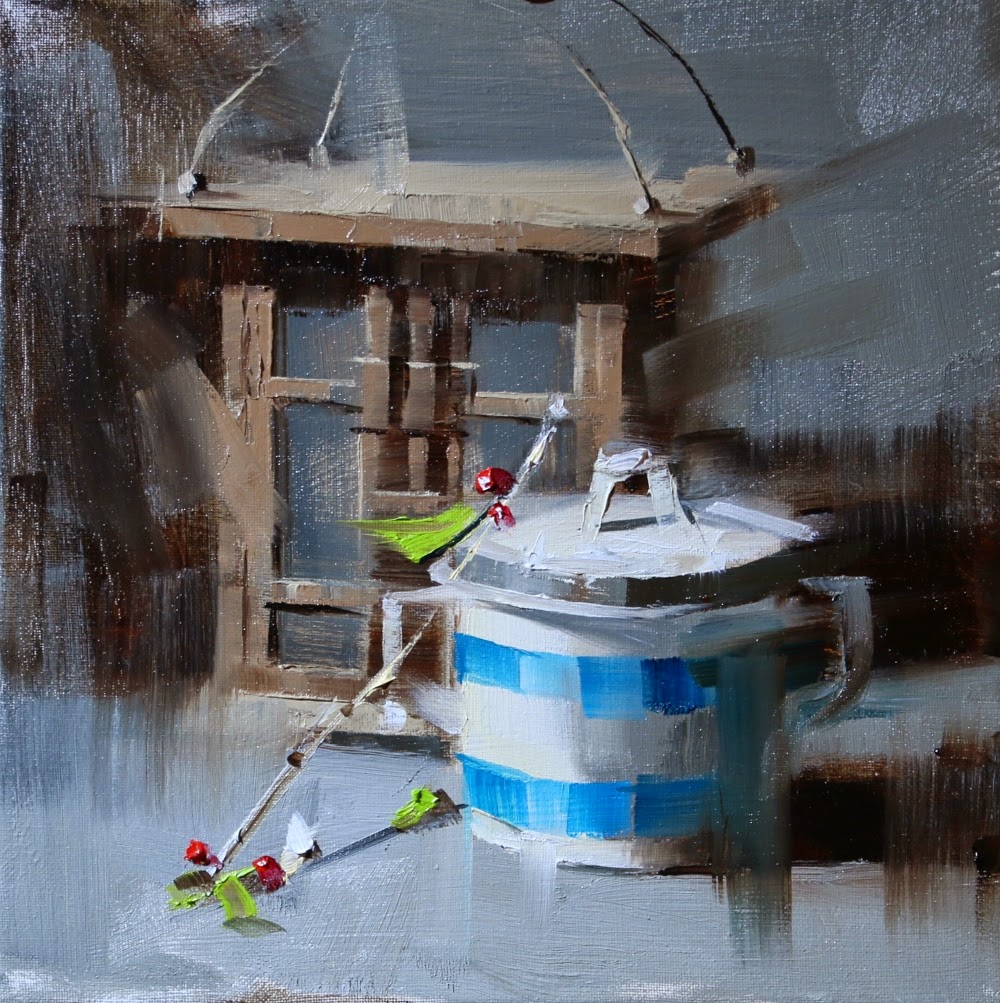Last week, I made a presentation to the Art Association of Elk Grove Village. They had asked me to demonstrate some methods in charcoal on paper. I set up a little still life, shined a light on it, and got to work. As I was drawing, I talked a bit about the benefits as well as the techniques involved with charcoal, and I surprised myself how many benefits there actually are. Here are a few that popped up as I was drawing:
It takes color out of the picture. If you are switching from one genre to anther (let's say from landscapes to portraiture), charcoal allows you to focus on drawing and value (lightness to darkness) without being confused by color. This can be especially helpful when you're feeling challenged by the subject matter.
It's easily erased and cheap. Mistakes can be made and corrected without much fuss or investment.
It forces you to see in simplified values. When you are working in black, white and gray, you must make value decisions without the help (or confusion) of color. Strong values strengthen your art in any medium, and charcoal can help you develop this skill quickly.
You can take time to get the drawing right. I spent a lot of time during the demo showing everyone how to measure to get proportions correct the first time. In the drawing above, I used the base of the pitcher as my guide to measure everything else in the still life so everything was proportionally correct. Many people resist measuring (I know I used to!), but if just a little bit of time is spent on it, it can save hours of misery later in the drawing, when you ask yourself, why doesn't this look right?
Edge work opportunities become pronounced. When two shapes of similar value meet, there is an opportunity for a lost or softened edge. In my drawing, you can see these opportunities where the bottom of the pear meets the shadow, and where the light side of the pear meets the lighter part of the table. I could soften these edges like this:
Sometimes I think that the difference between a good painting and a great one is found in the edges. Charcoal drawings can help us develop that skill too.
Charcoal can be beautiful! Here are two examples of exquisite charcoal drawings:
Armin Mersmann
Richard Young
Makes me wonder why I don't spend more time with charcoal. It's definitely a medium worth the time!









